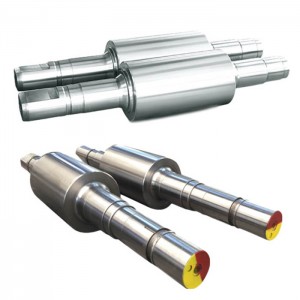The service life of cold rolls not only depends on the manufacturing quality, but also is closely related to the maintenance during use. If it is used improperly, the use effect will change greatly.
Fatigue spalling is the most common failure form in roll use. It originates from the fatigue crack on the surface of the roll. If the crack cannot be completely removed before the machine is put on the machine, it will fatigue expansion in the hardened layer to form a typical fatigue band, and then fatigue spalling occurs. Prevention of such accidents should be carried out throughout the operation of the roll. The user should be aware of the origin of these cracks and preventive measures.

1. Storage and preheating of rolls
The microstructure of the roll is very sensitive to sudden changes in temperature, so it is recommended to store the roll in a suitable temperature environment, support it with sleepers, and keep the roll clean.
The rolls cannot start suddenly under a strong load, nor can they suddenly stop running. A reasonable operation is: the rolls run for a period of time under light load, and then gradually load and start. A slight preheating of the rolls up to 80 °C is beneficial, but the process is slow and flame contact with the rolls is absolutely prohibited.
2. Grinding
Experienced grinders know that when grinding high-hardness rolls, inadvertent operations such as sudden knife feed, large feed amount, and improper selection of grinding wheels will cause grinding cracks, resulting in roll peeling.
3. Work hardening
During rolling, the contact fatigue stress on the surface of the roll body produces work hardening, which accumulates and causes cracks. Therefore, regular grinding is required to remove the fatigue layer.
4. Rolling accident
The surface crack of the roll also originates from the surface damage caused by the rolling accident, such as: slippage, overload, sticking steel, broken strip, etc. Therefore, for the normal operation of the rolling mill, we recommend that users establish strict rolling operation regulations and equipment regulations. .
5. Roll management
The user should establish a roll usage file and record the data during the use of the roll, such as: accident, grinding, use stand, rolling volume, turnover times, roll maintenance, etc., so as to facilitate evaluation and feedback to the manufacturer for joint research and improve the roll. life.

Post time: Mar-07-2022
